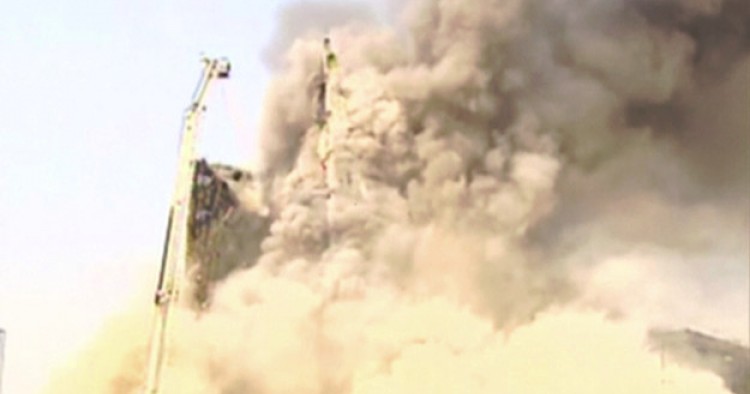The collapse of a 53-year landmark building in downtown Tehran on January 19 is likely to lead very quickly to a war of words among Iranian officials about culpability. The incident, which has left dozens of firefighters dead, follows a string of infrastructure-related disasters in the Iranian capital in recent months.
The initial response of the authorities was to dismiss any suggestion that foul play or politically motivated sabotage was behind the fire that engulfed the building before it collapsed. The fire has been blamed on “natural causes.” This kind of swift dismissal of any suggestion of sabotage as a potential cause is part of the ongoing efforts by the Iranian state to assure an anxious public about its ability to provide security and prevent spillover from regional conflicts where Tehran is involved.
From its military interventions in Iraq and Syria to the renewed fighting with militant ethnic Iranian Kurds on the Iran-Iraq border, Tehran has assembled a number of adversaries that have vowed to retaliate against its policies. Edginess among the Iranian security forces in Tehran is evident from a number of recent incidents where anti-air missiles have mistakenly targeted harmless drones misidentified as enemy aircraft.
The Mayor of Tehran, a hardliner by the name of Bagher Qalibaf, quickly initiated a public relations campaign to absolve the municipality for any transgression. He released statements indicating that he has for years warned about dangers posed by old buildings. Across the hardline-controlled media, fingers are quickly being pointed at the government of Hassan Rouhani. Tasnim News published a number of old documents that it claimed show that the authorities have been warned about dire conditions in old buildings in Tehran for years and have ignored them.
This latest disaster is once again likely to generate a national debate about misplaced policy priorities at the hands of the Iranian authorities. Within the Iranian population there is deep anger about state funds being disproportionately allocated toward pet projects favored by the ruling elite at the expense of the basic needs of the population. The costly Iranian nuclear program, Tehran’s extensive ballistic missile and other military programs and its deeply controversial interventions in Syria and Iraq are all examples of expensive ventures that have yielded little benefit to the average Iranian.
The Middle East Institute (MEI) is an independent, non-partisan, non-for-profit, educational organization. It does not engage in advocacy and its scholars’ opinions are their own. MEI welcomes financial donations, but retains sole editorial control over its work and its publications reflect only the authors’ views. For a listing of MEI donors, please click here.













